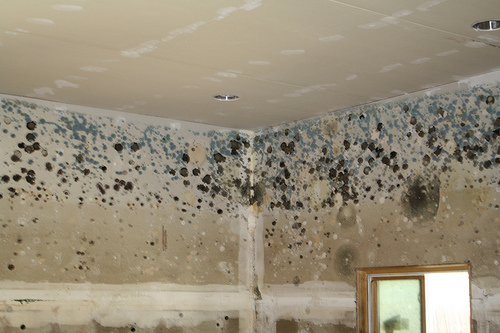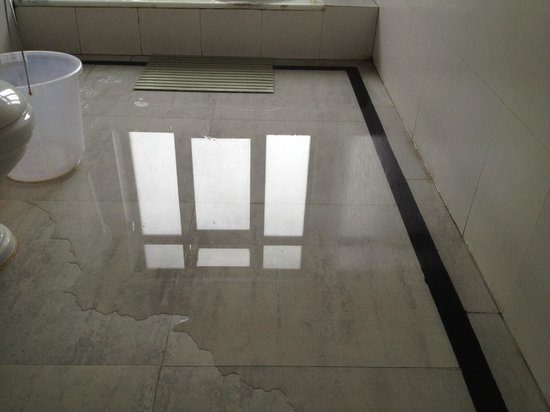Bathroom Leakages and Just How to Take Care of Them
Bathroom Leakages and Just How to Take Care of Them
Blog Article
Almost everyone has their personal rationale in relation to How to Repair and Prevent Bathroom Water Damage?.

Water damage frequently takes place in the restroom as a result of the water utilized daily. Occasionally, the damage could be a little mold from the shower. Other times, it's substantial damage on your floor. Whatever it is, it is constantly great to recognize the reason and stop it prior to it happens.
This overview will go through a few of the common sources of water damage in the restroom. We will certainly likewise analyze what you can do to avoid these causes from harming your bathroom. Allow's dive in.
5 Common Sources Of Water Damage in Shower Rooms
These are the typical reasons you would have water damage in your washrooms and also exactly how you can detect them:
Burst or Dripping Pipes
There are several pipes lugging water to different parts of your washroom. Some pipes take water to the commode, the sink, the taps, the shower, and also numerous various other places. They crisscross the tiny area of the shower room.
From time to time, these pipelines can get corroded and ruptured. Other times, human action can cause them to leakage. When this happens, you'll discover water in the edges of your washroom or on the wall.
To identify this, look out for bubbling walls, mold and mildews, or mold. Call a specialist emergency plumbing technician to fix this when it occurs.
Splits in your wall surface ceramic tilesv
Shower room wall surface tiles have been particularly designed for that purpose. They secure the wall surface from moisture from people taking showers. Nonetheless, they are not undestroyable.
In some cases, your shower room wall surface floor tiles crack as well as enable some dampness to seep into the wall. This could potentially ruin the wall surface if you don't take any action. If you observe a split on your wall ceramic tiles, fix it promptly. Do not wait till it destroys your wall.
Overflowing bathrooms and also sinks
As human beings, sometimes we make mistakes that could trigger some water damage in the shower room. For instance, leaving your sink faucet on can create overruning and damage to other parts of the bathroom with moisture.
Likewise, a defective bathroom might trigger overflowing. For instance, a damaged bathroom handle or other parts of the cistern. When this happens, it could harm the flooring.
As quickly as you see an overflowing sink or toilet, call a plumbing to help deal with it instantly.
Roof Leakages
Occasionally, the trouble of water damage to the shower room may not originate from the restroom. For instance, a roofing system leak could create damages to the shower room ceiling. You can identify the damage done by checking out the water spots on the ceiling.
If you discover water stains on your ceiling, check the roof covering to see if it's harmed. Then, call a professional to help address the concern.
Excess Wetness
It's amazing to have that lengthy shower as well as splash water while you hem and haw as well as act like you're executing, but sometimes these acts could create water damage to your shower room.
Sprinkling water around can cause water to head to edges and create molds. Watch just how you spread out excess wetness around, and when you do it, clean it up to prevent damages.
Final thought
Water damage to your restroom can be irritating. However, you can manage it if you stop some of the reasons mentioned in this guide. Call a professional emergency plumber if you see any extreme damage.
How to Prevent Water Damage in Your Bathroom?
Water damage repair is an expensive, meticulous, and lengthy process. Unfortunately, bathrooms are the most susceptible rooms to water damage due to toilets, showers, and sinks. Pipes and fixtures wear out over time and are not immune to damage. But all is not lost, as there are ways to prevent water damage from occurring in your bathroom.
Check Your Plumbing
Nothing lasts forever, especially pipes, which can rust and begin leaking over time. You should periodically conduct pipe inspections and pay attention for any musty smells or water stains that may indicate you need water damage repair. Here are some things to check:
Frequently test valves for your toilet, shower, and sink to ensure they are properly working.
Check faucet supply lines hidden under vanities and replace when needed.
Replace cracked or deteriorating caulking along sinks, tubs, and showers.
If you notice a clog in your sink, call in a professional.
Since you can’t check the pipes in the wall, keep an eye out for stains, drywall bubbling, musty smells, and excess moisture; if the bathroom is on a second level, check the ceiling of the room directly below for these signs.
Don’t Overwork Your Toilet
One of the most common reasons bathrooms need water damage repair is due to overflowing toilets. Save yourself the hassle of cleanup by being mindful and not pushing your toilet to extreme limits. If you have young children, it is especially important to keep an eye on them when they are in the bathroom and to teach them how to avoid clogging the toilet. Here are some more tips to help prevent your toilet from overflowing:
If you have a septic tank, only use septic-safe toilet paper
Do not flush anything down the toilet besides toilet paper; items like diapers and sanitary napkins will clog the piping
Pay attention to your toilet’s water level: If it’s low, it could mean it is partially clogged or that there is a crack in the toilet bowl
https://www.alure.com/home-improvements-blog/resources/how-to-prevent-water-damage-in-your-bathroom

How to Prevent Water Damage in Your Bathroom?
Water damage repair is an expensive, meticulous, and lengthy process. Unfortunately, bathrooms are the most susceptible rooms to water damage due to toilets, showers, and sinks. Pipes and fixtures wear out over time and are not immune to damage. But all is not lost, as there are ways to prevent water damage from occurring in your bathroom.
Check Your Plumbing
Nothing lasts forever, especially pipes, which can rust and begin leaking over time. You should periodically conduct pipe inspections and pay attention for any musty smells or water stains that may indicate you need water damage repair. Here are some things to check:
Don’t Overwork Your Toilet
One of the most common reasons bathrooms need water damage repair is due to overflowing toilets. Save yourself the hassle of cleanup by being mindful and not pushing your toilet to extreme limits. If you have young children, it is especially important to keep an eye on them when they are in the bathroom and to teach them how to avoid clogging the toilet. Here are some more tips to help prevent your toilet from overflowing:
https://www.alure.com/home-improvements-blog/resources/how-to-prevent-water-damage-in-your-bathroom
Do you appreciate reading up on How to Repair and Prevent Bathroom Water Damage?? Create feedback down the page. We'd be interested to find out your suggestions about this write-up. In hopes to see you back again in the near future. Feel free to take a moment to promote this blog entry if you liked it. Thanks for your time. Don't forget to come by our blog back soon.
Source Report this page